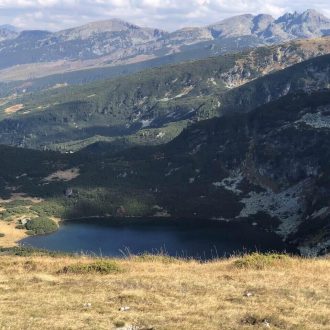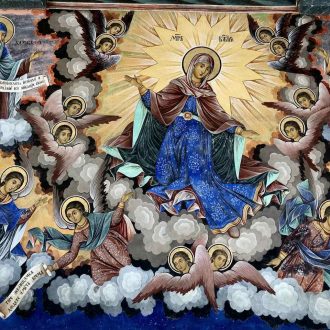A day at Rila Monastery
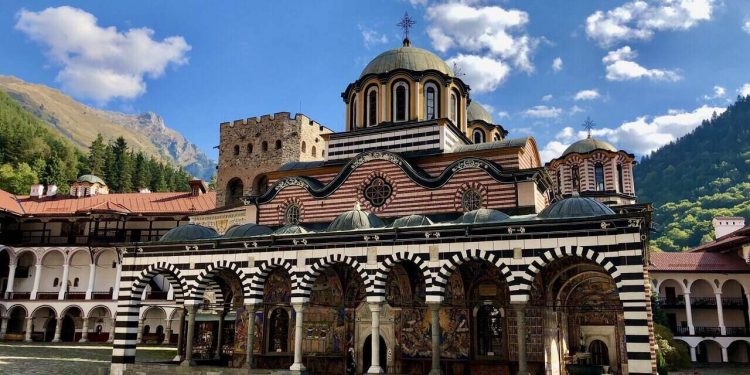
You don’t visit Bulgaria and not visit the 1000-year-old monastery that is dedicated to the patron saint of the country. We had just two days in Sofia, the Bulgarian capital, but that did not stop Sharath and me from visiting Rila Monastery, located 120 km from Sofia, high up in the Rila Mountains and surrounded by the lush Rila National Park. Rila Monastery Bulgaria is an UNESCO Heritage Site built 3700 feet above sea level is dedicated to St Ivan Rilsky who had lived in a small cave in the mountains here, after giving up the pursuit of material wealth and had committed his life towards healing and helping people with his miracles. A small stone church was built initially here by his students and followers which later evolved into this magnificent monastery that houses 60 monks even today. The relics of St Ivan are also housed here after journeying to different cities in Bulgaria and Hungary. The monastery is also depicted on the Bulgarian currency – one lev banknote as well.
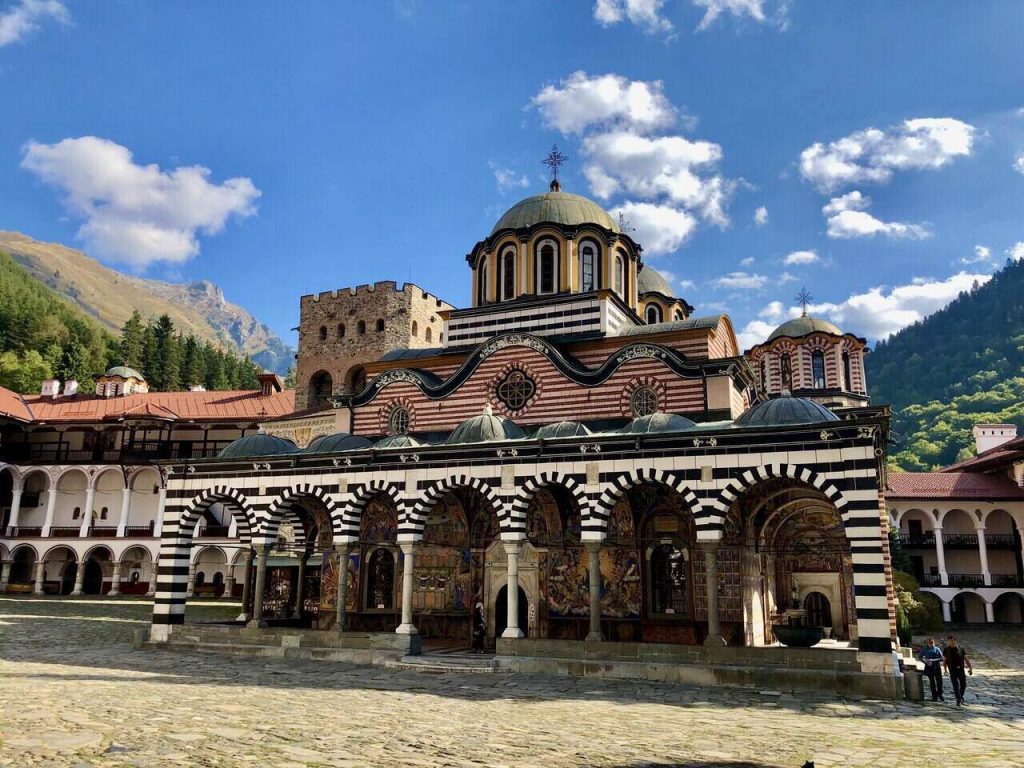
Our journey started in the wee hours of the morning as we drove from Sofia towards the Rila Mountain and the Rila National Park along with Slavy, who works with the Historical Park and has accompanied us all the way from Varna to Sofia. It was a couple of hours by road and it was the perfect time to listen to stories. St Ivan was revered as a saint of the Orthodox Christian Church even in the 9th century and he was known for his miracles and Rila Monastery Bulgaria is synonymous with him and his legends.
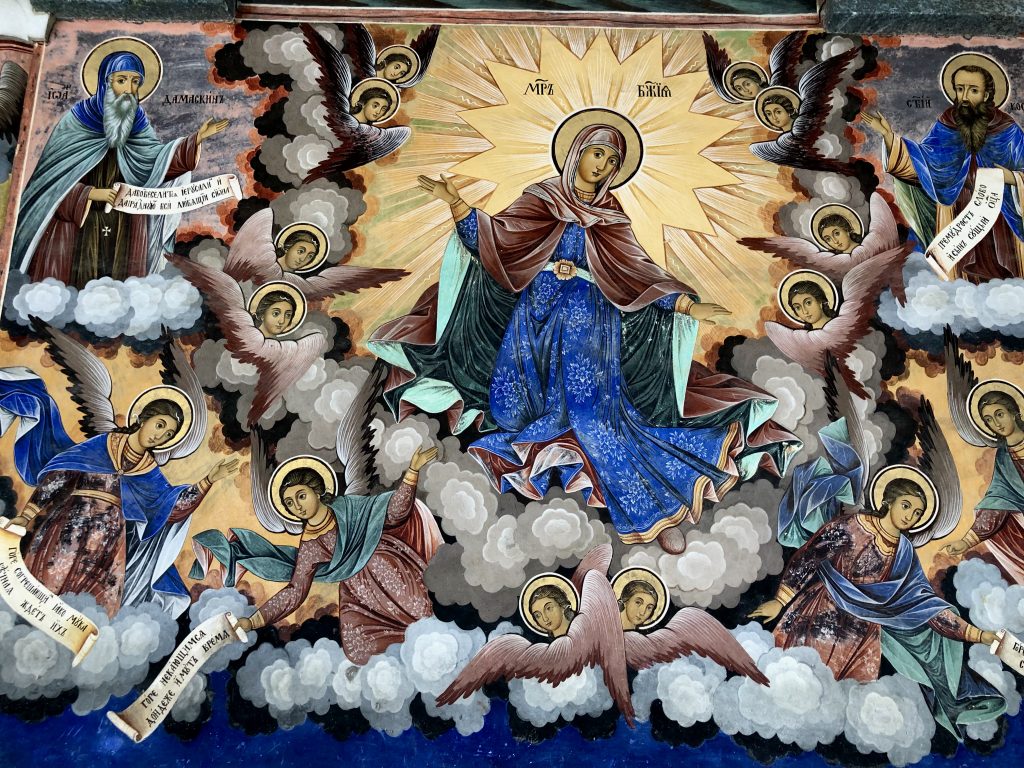
It is said that he chose to become a recluse as a protest against the rampant corruption that was prevalent in the Church around the 10th century. He went to the mountains and lived in a small cave and spent his time and performing miracles, healing people of diseases and feeding the poor. It is believed that even wild animals and birds came to live with him. St Ivan was initially a shepherd and he later realized his calling was to become a monk, dedicating himself in the service of people.
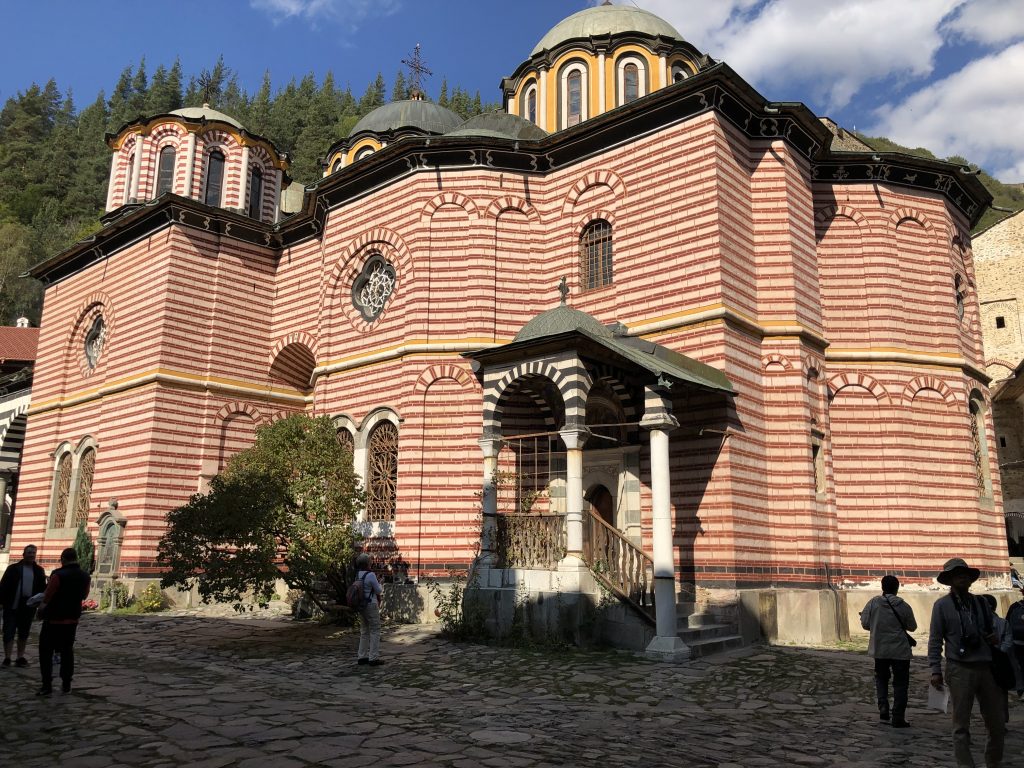
One of the famous miracles was the Fable of the Two Pies. It is said that St Ivan was given the last two pies by a baker who went hungry himself, but the saint did not just feed him but even managed to feed an entire village of starving people with the two pies. Although this was a legend, he is also recognized as the “Patron Saint of Pies and Pie Makers” and even today a festival commemorating the “two pies” is celebrated all over Bulgaria and even in America as well where the people pray to the ” two pies, Ivan”.
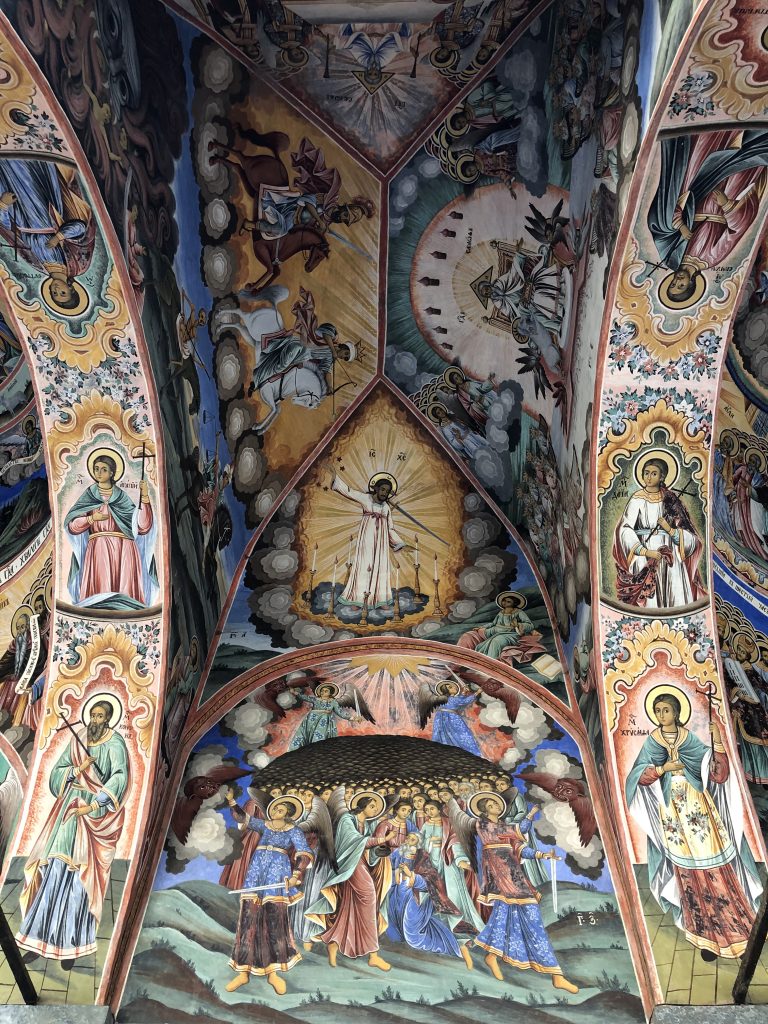
However, let’s rewind to the 9th century. When St Ivan started healing people, his followers flocked around him and started living in the neighbourhood. It even brought the Bulgarian Tsar Peter 1 to visit him. The king left his capital at Preslav and made the arduous journey of traversing 450 km to the Rila Mountains to meet the saint. He brought with him several gifts along with him but was unable to make the last mile to the cave, which was inaccessible.
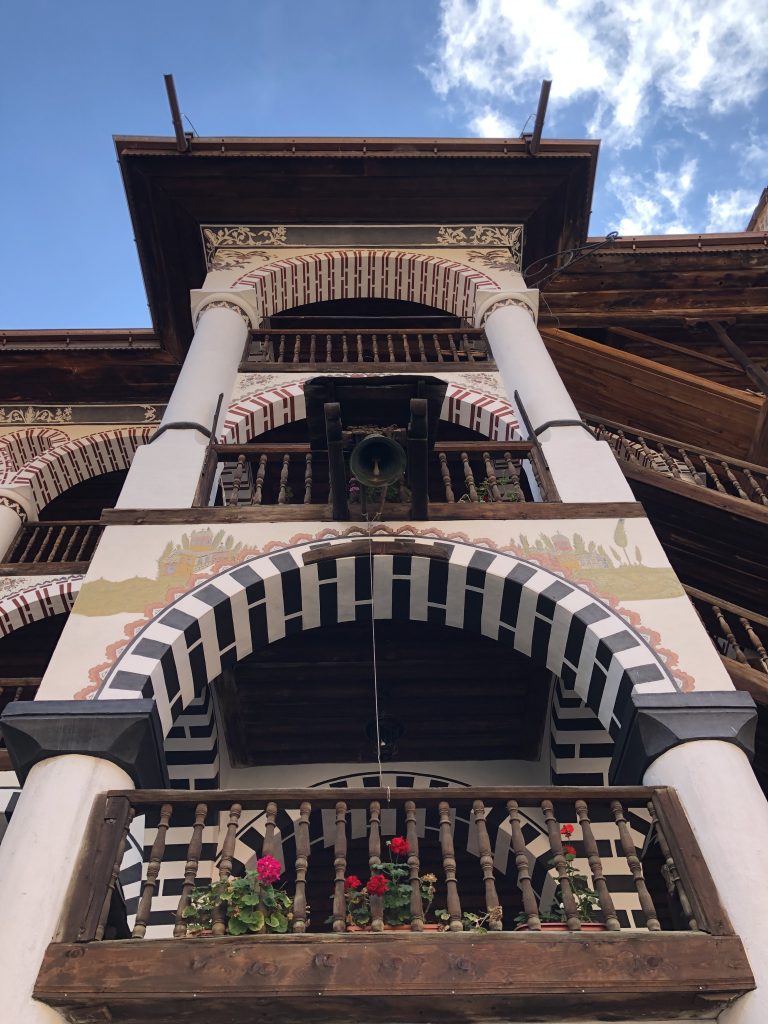
The gifts were however sent to the saint with a soldier on horseback. However, the monk greeted the king from far as the men bowed to each other in reverence but he returned the gifts, especially the gold saying that the king needed it more than him to serve the people. It is believed that he had said,” “He who wants to be first among all, must be a servant to all.”
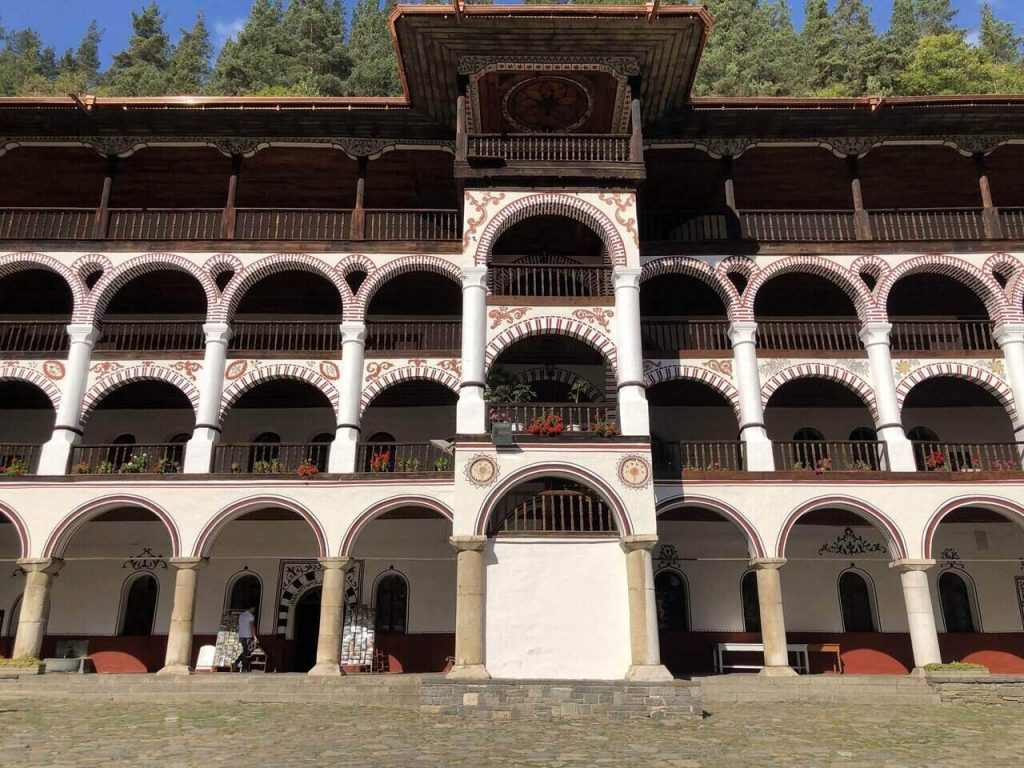
St Ivan lived here in the cave for the last five years of his life and his followers slowly established a brotherhood which eventually became a monastery. Built initially in the 10th century during the First Bulgarian Empire by the students and followers, it was rebuilt during the medieval Byzantine era with donations and support from the kings and aristocracy. Despite the Turkish invasion and natural calamities like fire, Rila Monastery Bulgaria continued to rise from the ashes and the current monastery was built in the 19th century. The relics of St Ivan had been taken to various places including Sofia, the St Ivan Church at Veliko Tarnovo, the capital of the Second Bulgarian Empire and even the medieval Hungarian capital of Esztergom before being returned to the Rila Monastery.

The cave of St Ivan Rilski is accessible even today for tourists but its a short 4 km trail hike from the monastery into the mountains. There is a marked trail that takes you to the cave and the small stone church as well that was built around the same era. There is a very tiny crevice between the rocks and the church into the cave but a legend says that only ” a righteous person ” is allowed to enter. Even today, tourists leave small rags around the caves, perhaps as a way of asking the saint to heal them.
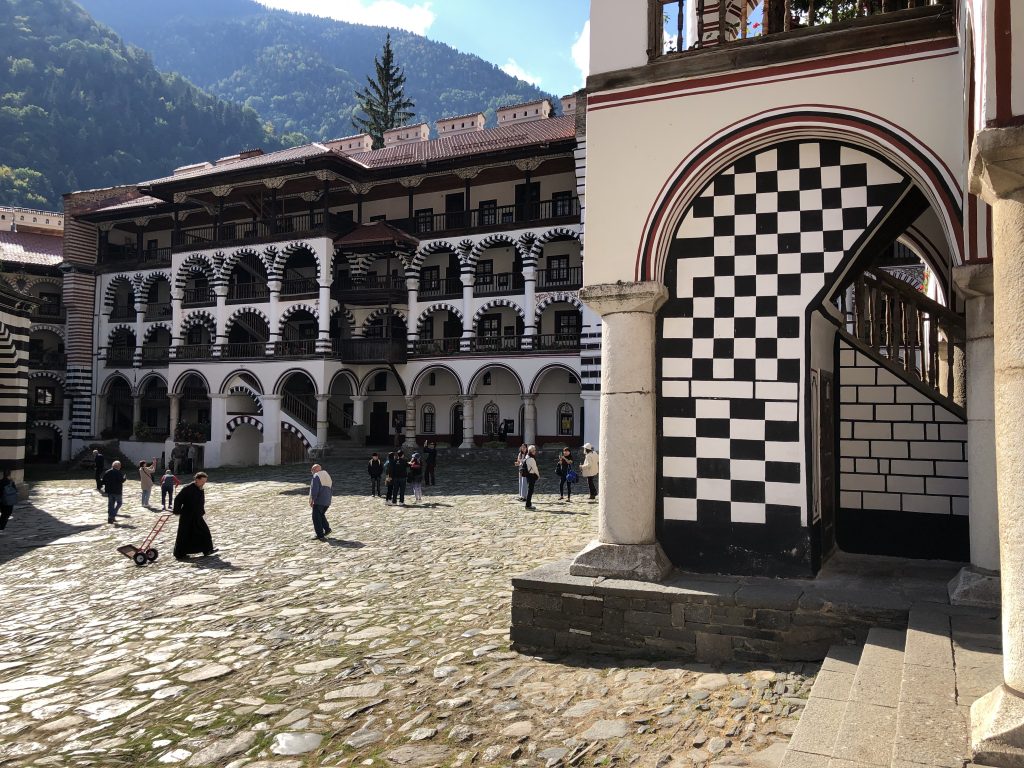
The monastery itself has undergone quite a radical change in its structure. From a modest cloister, it was transformed into a fortified monastery complex during the medieval era. In the Byzantine times. the monastery housed several monks and it included a defensive tower, a small one apse temple among other monuments. Among these, only Hrelyo’s Tower, named after the feudal lord who built it remains today. While both the Bulgarian Kingdoms and the Byzantine kings supported the monastery, it was plundered during the five centuries of Ottoman rule. Eventually, it was restored in the 19th century with contributions from the Orthodox Christian community and churches from Bulgaria, Russia, and other countries. Rila Monastery Bulgaria had preserved the Bulgarian cultural identity and the language and it was even the hideouts of revolutionaries who worked to liberate Bulgaria.

Personally I felt like I was inside a formidable fortress the moment I entered the monastery through the towering iron gates. Surrounded by 24 metre walls, I was inside a massive quadrangle courtyard paved with stones that occupy 3200 sq metres. For a moment, I gasped, overwhelmed by the unique architecture and patterns and the facade of the monuments that surrounded me. Painted in black and white with tinges of red, the monuments had an old-world charm about them. I was lost in the wooden staircases and carved verandahs and the painted arches and columns.

Spread over 8800 sq meters, there were over four main structures – the tower, the main church, the residential complex, and the monastery museum in the entire monastery complex which was shaped like an irregular pentagon. The Ottoman influences and the Bulgarian Revival Architectural styles can be seen in the massive domes, the striped painting of the portico in the courtyard along with the black and white arches. The residential complex has over 300 cells for monks to live while there is an ancient library filled with rare manuscripts. Rile had always drawn students to St Ivan’s cave and even today it remains a literary and cultural centre, besides a religious monument and a symbol of Bulgaria.
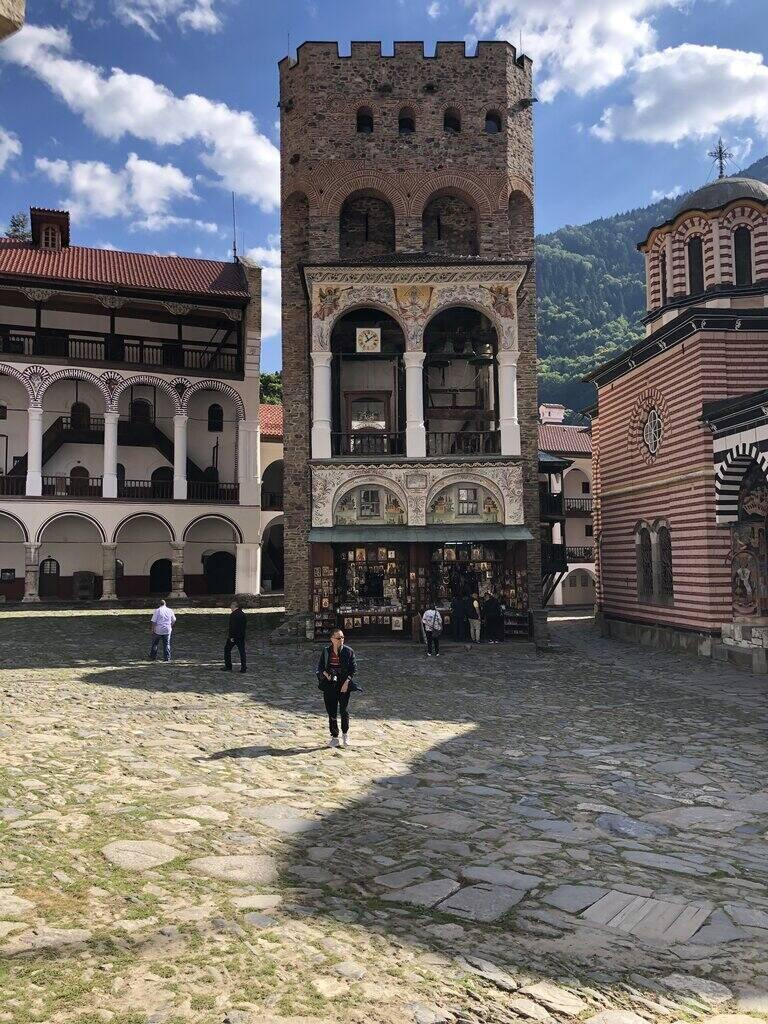
The first thing I noticed was the formidable medieval tower. The 24-metre tall Hrelyo’s Tower is the oldest structure in the complex and was built in the 14th century. It was the only structure that had survived the fire while the rest of the buildings had been destroyed. It was used for defense and was also as a residential complex for the monks in that era and a chapel – Transfiguration of the Lord was built on the top floor.
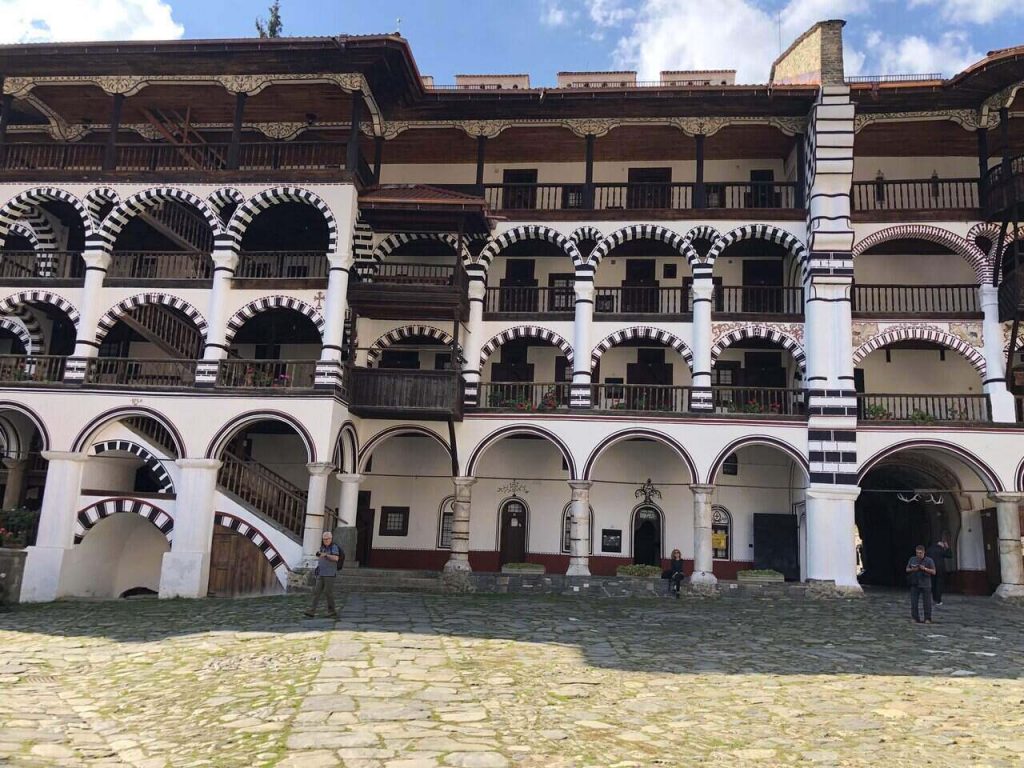
The main church, built in the 19th century has five domes, three altars, and two side chapels. The colorful tempera frescos were breathtaking and they depict scenes from heaven and hell painted by Bulgarian artists besides religious icons. There are scenes depicted from the Bible, portraits of Adam and Eve, Baptism of Christ, and Judgement Day being depicted among others. Some of the painters have even signed on their murals. Built by Peter Ivanovich, the church was called Nativity of the Virgin and it houses some of the most valuable iconostases which are gold plated, carved in wood made by the masters, which took five years to complete. The relics of St Ivan are preserved here as well besides other religious icons.
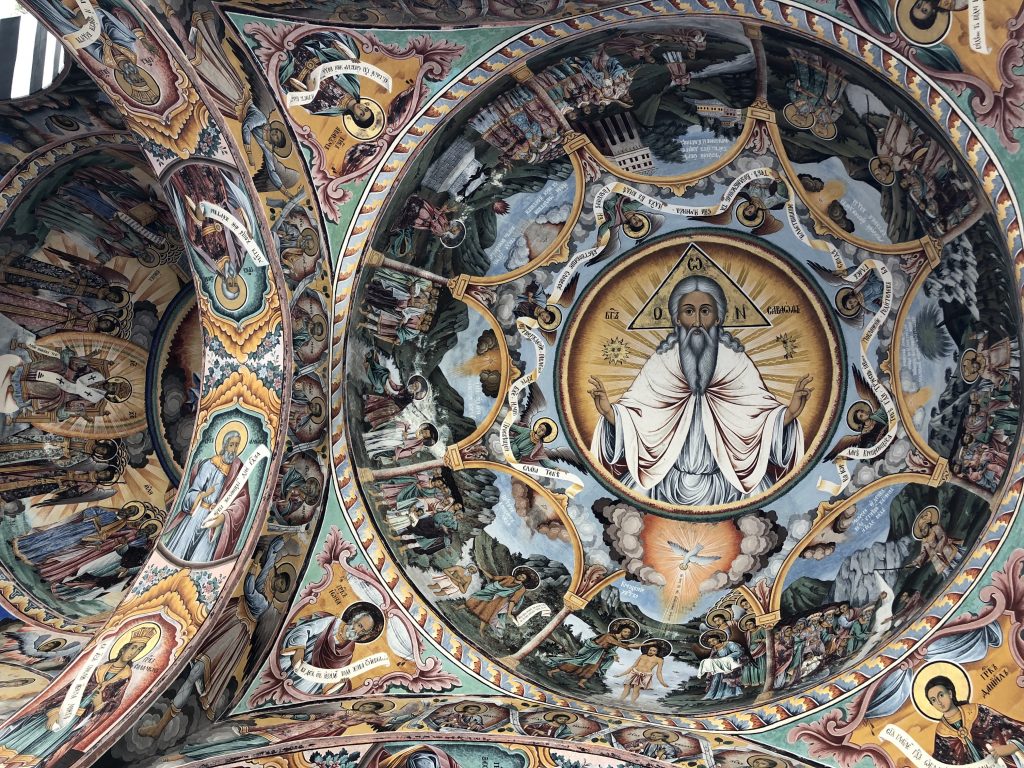
Looking up at the residential area, it almost felt like a four-storeyed fortified complex built with thick walls and tiny windows looking out into the world. There are over 300 chambers, of which 100 cells are for monks. It houses a massive library with several manuscripts, chapels, drawing rooms, dining rooms, rooms for donors, and a massive kitchen called Magnertnitsa which has huge vessels, especially cauldrons where monks prepare their dishes for festivals. There is a hospital here as well. There are even rooms for doorkeepers which are meant “for the guilty,”

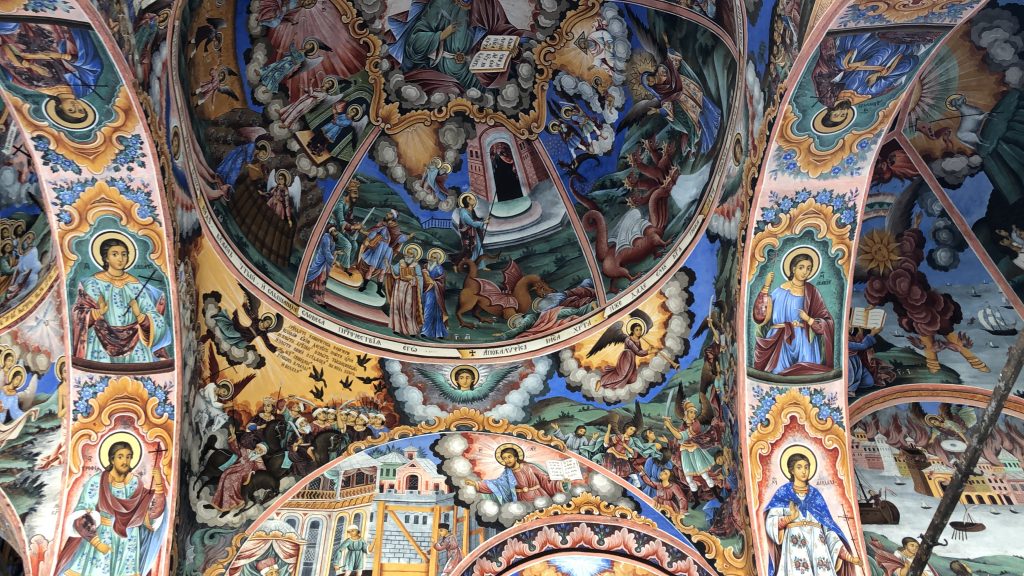
The Museum ideally should not be missed. It takes you to the 14th century and displays Bulgarian art between the 14-19th centuries. There are over 35000 historic items on display including religious icons. And one of the most valuable artifacts on display is The Cross of Rafail, which is an ornately carved wooden cross that took 12 years for the monk to create. Carved out of a single piece of wood, the monk has chiseled and recreated over 100 religious scenes and 650 figures in miniatures using small knives. Apparently the sculptor lost his eyesight but the piece is a masterpiece
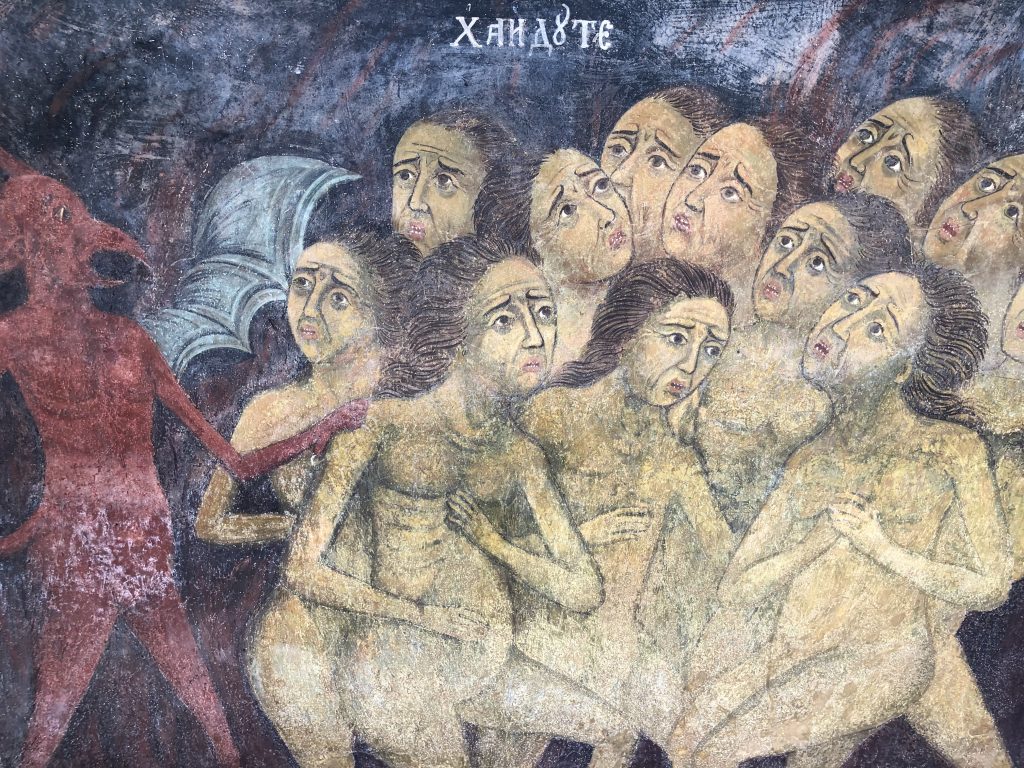
The monastery is always teeming with tourists who are constantly in awe of the architecture, the frescos, the artifacts but mostly it is the life of St Ivan and his aura that is reflected in the monastery. Even today the monks who live here, wander around in their black cloaks and hats in the courtyard and will warmly welcome you Lost in the lap of nature, surrounded by dense forests and mountains with fresh lakes and rivers, the monastery is cloaked in old-world charm. You can feel your body and mind getting healed by just spending a few minutes here, although I wish I can spend an entire weekend here.
Fact File
The ornate Rila Monastery Bulgaria is about 120 kms from Sofia and you can travel by train, by bus, private cars and private tours. There are also shuttles from Sofia to Rila Monastery and you can check with your hotel for the details.The journey takes a little more than two hours and I would recommend an entire day here. There is accommodation available in the monastery but there are also small hotels and bed and breakfasts in the villages around.
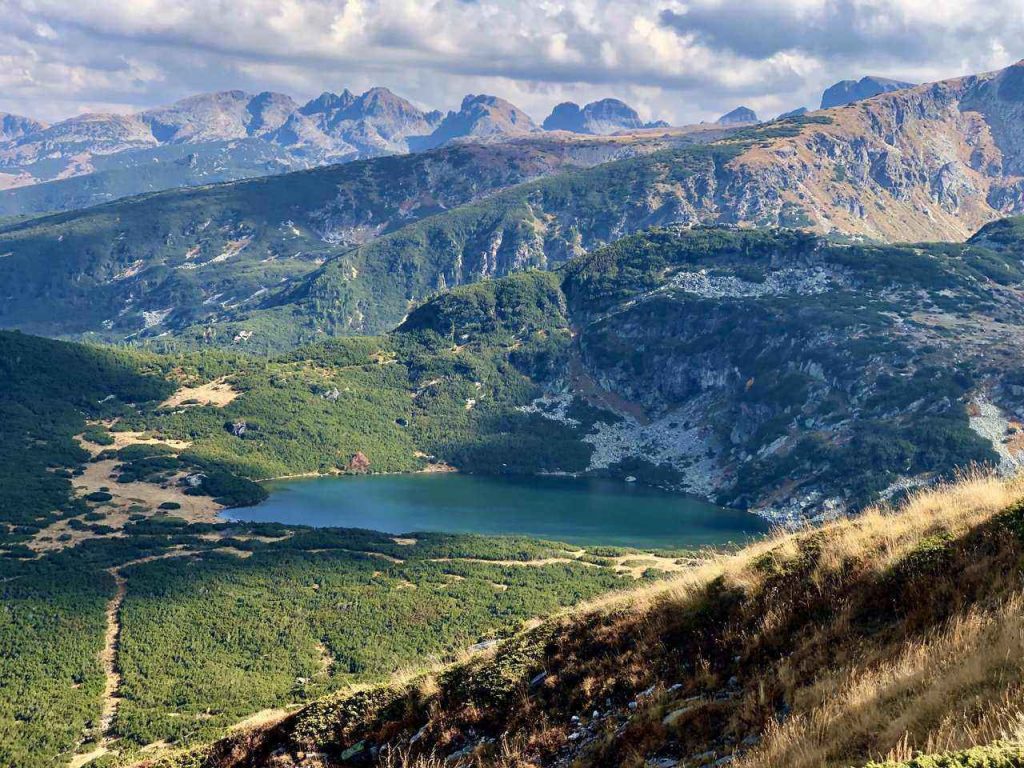
Rila Monastery Bulgaria is located in the Rila Mountains inside the Rila National Park. The Seven Rila Lakes Trek is one of the popular hikes here but it is not advisable to go there on the same day of your visit to Rila Monastery. We made that mistake. It is recommended to stay a couple of days in the area and go on the hike and explore the neighboring villages.
Coming up – An experience of Seven Rila Lakes Trek

